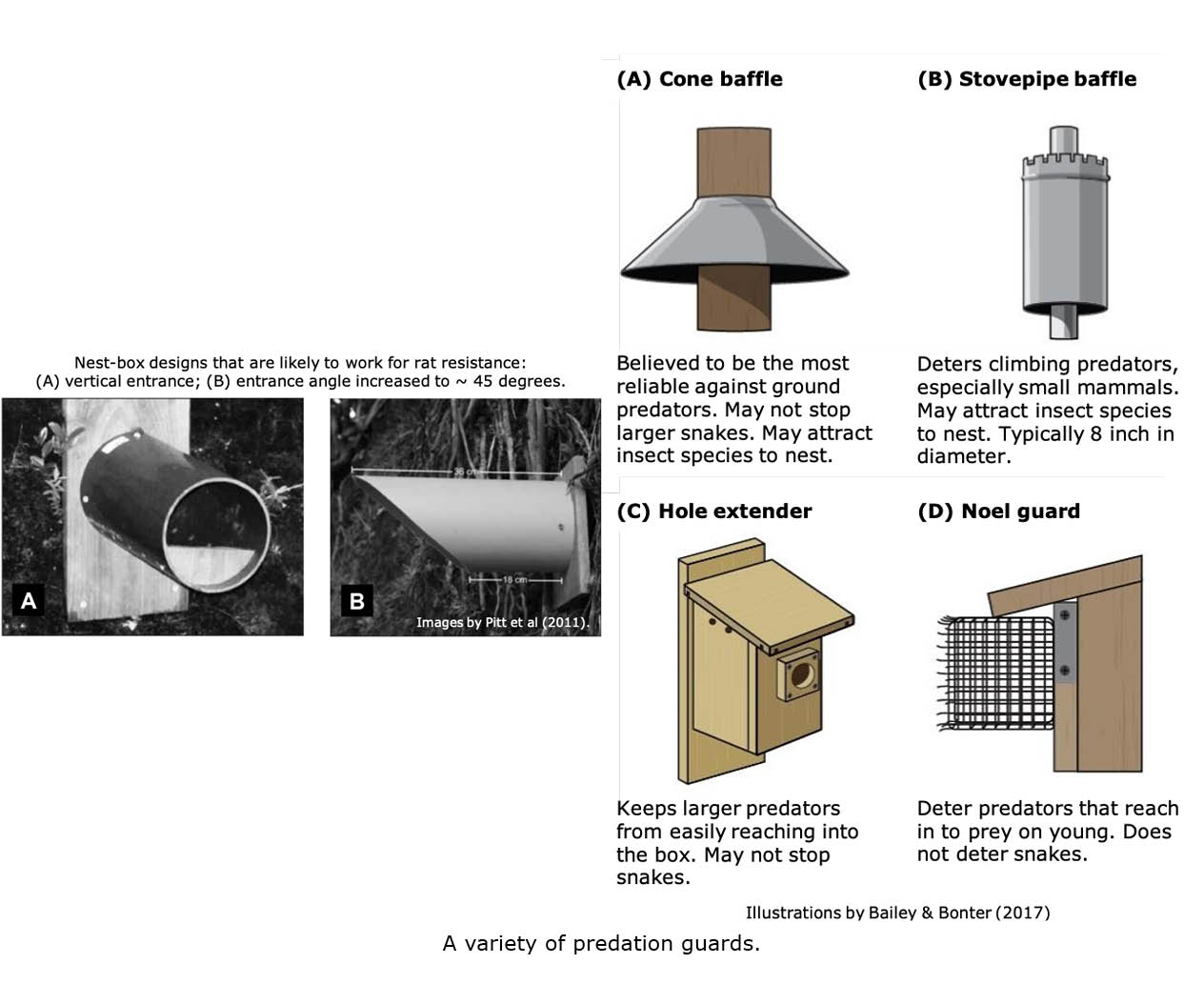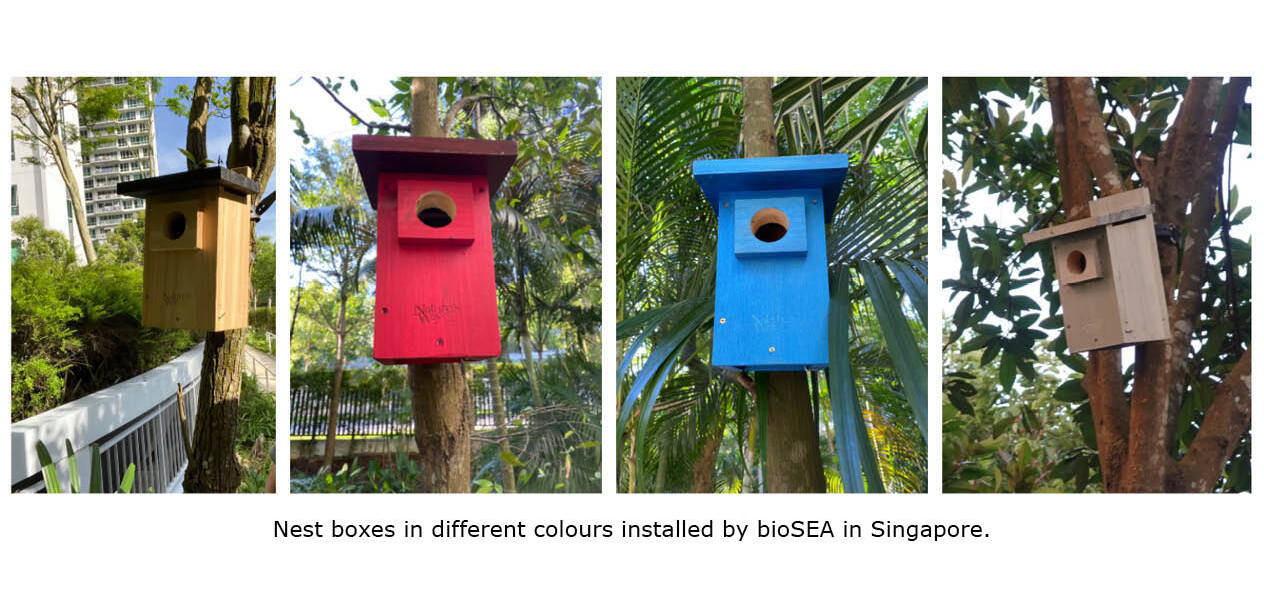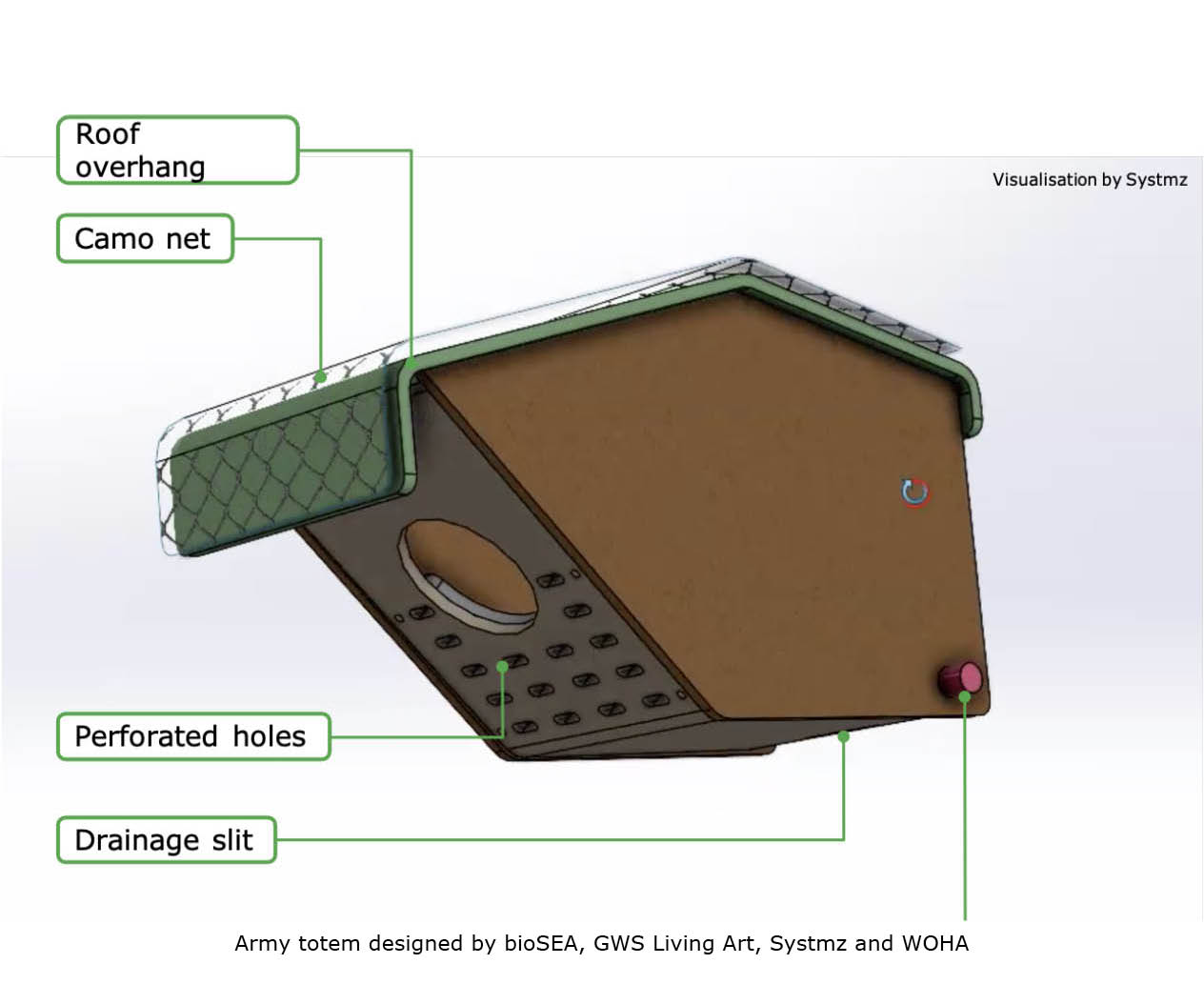Ecological Considerations for Eco-active Totems
This blog post relates to our work on the Eco-active totems project. Below we outline the considerations undertaken by bioSEA team when designing the totems.
Totems are to animals what built-to-order (BTO) flats1 are to Singaporeans – a beautiful, customised living space in an up-and-coming neighbourhood near you. While we like to choose homes that have high ceilings, spacious rooms, are oriented in auspicious directions and situated in good neighbourhoods, the housing needs of our wild neighbours are a little different.
Before designing homes for wildlife, it is essential to understand their attitude towards living spaces. Birds, for example – are more inclined to being temporary tenants than aspiring homeowners. They have a breeding season2 which typically ranges from February to July in Singapore and it involves seeking out the best spot to build a nest, lay eggs and raise their young in. Once the season ends and fledglings are old enough to fly the coop, they leave their nests behind, gather in a flock and seek out suitable roosting and foraging sites. While some species of birds can be rather fussy and seek out new nesting spots every breeding season, other species may return to their natal home to lay eggs in3. In countries where seasons fluctuate, some species return to their nesting site to overwinter3 as it is better than roosting out in the cold.
Now, if you look out of your window, you might see a bird nest built in the crook of a tall tree or even a precarious ledge of a building. It really makes you think birds aren’t very particular when it comes to housing standards. Well, that may be true for some urban adapted species such as the mynas and pigeons of Singapore but our tiny passerines, the Eurasian tree sparrows for example, prefer nesting cavities4,5. Tree cavities are the most preferred because of their naturalistic feel and inherently superior insulating capabilities6 but it is hard to come by ready-made tree hollows nowadays. Natural tree cavities can take over a hundred years to form7 and cavities made and abandoned by other birds, such as the barbets or woodpeckers, can be limited in number resulting in competition for nest-cavity dwellers. While birds have adapted and found homes in crevices of buildings or nooks in other built infrastructure4,5, they are in need of better, more sustainable housing.
This is where Totems for birds make an entrance. Our Totems are specially designed ecology of nest-cavity dwellers. Careful consideration went into deciding the dimensions, colour, cavity size, angle of entrance, landing platform provision, material and predation mitigation strategies for the nest box. The placement of the boxes is further informed by behavioural characteristics of the birds which includes their preference for nesting at a distinct height off the ground, surrounding vegetation, interior and exterior cladding that better replicates the environment a tree hollow would provide and orientation in relation to the sun to ensure a desired microclimate is achieved.
The dimensions of the nest box and its cavity depend on the species it is intended to play home to. The Eurasian Tree Sparrow, Asian Glossy Starling, Oriental Magpie Robin and Long-tailed parakeet were used as reference species for this project. Despite all these species being cavity-nesters, it is important to remember that each species still has unique nesting habits and requires careful modifications to their nest box design. The cavity diameter ranges from 3-5 cm for sparrows8, approximately 5 cm for starlings 9 and magpie robins10 and 8-12 cm for larger parakeets11. The diameter of the opening ensures only the intended species is able to enter while excluding predators and competing species from becoming unwelcome visitors12.

As a rule of thumb, nest box construction follows a 1:3 entrance diameter to box interior depth ratio13,14. In other words, a sparrow’s nest box with a 4 cm opening will typically have an interior depth of about 12 cm. This ensures the sparrows have enough space to deposit nesting material in and move about without mobility being compromised. Another interior design consideration is to ensure the inner roof is smooth in texture. Visitors such as bees and wasps often find nest boxes suitable to make permanent homes in due to their internal void providing enough space for nest construction and small entrance keeping out predators15. Rough roof textures serve as the perfect substrate to build honeycombs upon. To prevent these unintended visitors from settling in, it is advised that the ceiling be coated in paraffin wax or rubbed down with an odourless bar soap to create a slippery surface16.
|
The more you know Bumble bees in South Korea have taken a particular liking to nesting in artificial bird boxes, akin to the honey bees of Singapore, and when it happens to be occupied by its intended tenant, the bees do not hesitate to forcibly evict them. Not unlike the eviction notice a landlord sends expecting a tenant to vacate the premises within a week, bees tell birds to ‘buzz off!’ with auditory warning signals. Often birds get distressed and leave the nest in fear of being swarmed and stung. The cozy nesting material left behind in a hurry, along with an empty cavity serve as the perfect home for the bumble bees17. |
Apart from bees, birds also have predators that they need to be worried about. This includes rats18, hornbills19 and snakes20 which raid nesting cavities to feed on eggs or nestlings. To prevent rat predation, the entrance to the box is titled downward at a 45-degree angle18 making it a challenge for them to find enough leverage to climb in. This is followed up with the entrance having a hole extender21 which makes it difficult for larger birds to reach in and grab the eggs or fledglings. Snakes may get past both these predation guards, hence cone baffles or stovepipe baffles21 are great additions that prevent them from slithering in by having a physical barrier that deters them from reaching the nest.

Lastly it is important to consider what colour(s) and material(s) the totem is going to be made of. Birds typically prefer brown, green and grey/silver due to their inconspicuous look that camouflages more easily with the surrounding vegetation22 but robins and starlings have shown a preference for black and blue respectively22. Red and yellow seem to be the least favoured as they are not only the most contrasting colours against a wide variety of natural backgrounds but they are typically used as warning colours to deter animals from going near them23.

While there is a natural preference for wooden nest boxes, the Totem design we chose took on a hybrid approach. Wood, while hardy and preferred, has the tendency to rot over time. Especially in a tropical country such as Singapore, the humidity degrades the quality of wood rather quickly. The team designed an aluminium – wood hybrid box to counter these pitfalls experienced by traditional designs. Wood and aluminium are both good insulators which ensure that the desired microclimate is maintained within the box for birds to thrive in6. A fully aluminium box was not considered as a rough landing substrate is required for birds to hold and perch on as they approach the entrance of the box. This is better provisioned by wood and further supplemented with a mesh that increases the gripping surface for avifauna.

Once the design is settled, it is crucial to position the box in the right location. It is recommended that nest boxes be placed at least 3m off the ground24 and have their entrances oriented away from the sun to prevent overheating. Adding native vegetation to the design further entices birds to nest in the Totems as the foliar coverage conceals the nest from predators and provides perching spaces outside the nest. It also aids in keeping ambient temperatures cool and creates a more livable environment for birds.
With that, you now have an ecologically informed Totem design! Designing supplemental habitats for our wild neighbours can be just as challenging as designing homes for people. A lot of market research, collaboration and thought need to go into creating the right homes for wildlife. Do not be disheartened if animals do not take to your Totem immediately. Often our wild neighbours require some time to recognize habitats in urban environments and get comfortable with living in them. It might take a few months or up to a year for them to settle into a Totem. Be patient and consistently monitor your Totem, observe your intended species and their habits and make informed adjustments to your Totem’s placement or design as you deem necessary, over the course of its implementation. Designing home and habitats takes trial and error but only through this back and forth do we come closer to a harmonious co-existence
